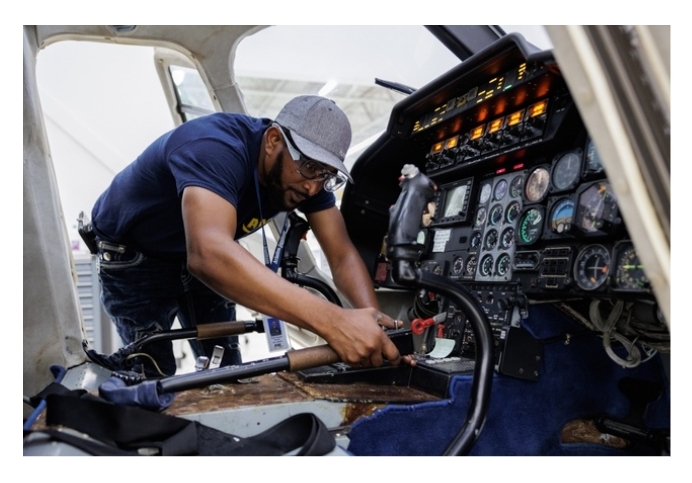Aircraft maintenance is an essential component of aviation that guarantees safety, performance, and longevity of aircraft. It involves a comprehensive range of tasks designed to keep aircraft in optimal condition and ensure they meet regulatory standards. This article delves into the significance of aircraft maintenance, the types of maintenance required, and best practices for maintaining aircraft.
The Importance of Aircraft Maintenance
Aircraft maintenance is crucial for the safe operation of aircraft. Regular maintenance checks help identify and rectify potential issues before they become serious problems. This proactive approach reduces the risk of accidents and ensures that aircraft operate efficiently. The Federal Aviation Administration (FAA) and other aviation authorities mandate strict maintenance schedules to uphold safety standards and enhance overall flight safety.
Types of Aircraft Maintenance
Aircraft maintenance is categorized into several types, each with specific objectives and schedules. These include:
1. Routine Maintenance
Routine maintenance refers to scheduled inspections and minor repairs that occur at regular intervals. This includes daily checks and pre-flight inspections to ensure that all systems are functioning correctly. Routine maintenance helps prevent small issues from escalating into major problems.
2. Preventive Maintenance
Preventive maintenance involves regular checks and services designed to prevent potential issues from occurring. It includes tasks such as engine inspections, fluid level checks, and system calibrations. The goal of preventive maintenance is to extend the lifespan of aircraft components and minimize the likelihood of unscheduled downtime.
3. Corrective Maintenance
Corrective maintenance is performed when an aircraft exhibits a malfunction or problem that needs immediate attention. This type of maintenance addresses unexpected issues and repairs them to restore the aircraft to a safe operating condition. Corrective maintenance is reactive and often follows routine inspections or reports from flight crews.
4. Overhaul Maintenance
Overhaul maintenance is an extensive process that involves disassembling and thoroughly inspecting aircraft components or systems. This type of maintenance is typically performed at regular intervals or when components reach a certain number of operating hours. Overhaul maintenance ensures that all parts are refurbished or replaced as necessary to meet safety and performance standards.
Best Practices for Aircraft Maintenance
To ensure effective aircraft maintenance, several best practices should be followed:
1. Adherence to Manufacturer Guidelines
Aircraft manufacturers provide detailed maintenance manuals and guidelines specific to each aircraft model. Following these guidelines is crucial for performing accurate and effective maintenance. Adhering to manufacturer recommendations helps ensure that all maintenance tasks are performed correctly and in compliance with safety standards.
2. Utilization of Qualified Personnel
Aircraft maintenance should only be performed by qualified and certified technicians. These professionals possess the necessary training and experience to handle complex maintenance tasks and identify potential issues. Certification from recognized aviation authorities, such as the FAA or European Union Aviation Safety Agency (EASA), is essential for maintaining high standards of safety and quality.
3. Regular Training and Certification
Continuous training and certification are vital for maintenance personnel to stay updated with the latest advancements in aircraft technology and maintenance practices. Ongoing education ensures that technicians are knowledgeable about new systems, tools, and regulations, contributing to more efficient and accurate maintenance procedures.
4. Implementation of a Comprehensive Maintenance Management System
A robust maintenance management system is essential for tracking and scheduling maintenance tasks. This system should include a detailed record of all maintenance activities, including inspections, repairs, and replacements. Proper documentation helps ensure that maintenance tasks are performed on schedule and provides a comprehensive history of the aircraft’s maintenance.
5. Adherence to Safety Protocols
Safety is the primary concern in aircraft maintenance. Technicians must adhere to strict safety protocols, including the use of personal protective equipment (PPE) and the implementation of safety procedures during maintenance tasks. Ensuring a safe working environment reduces the risk of accidents and enhances the overall effectiveness of maintenance activities.
Conclusion
Aircraft maintenance plays a pivotal role in ensuring the safety, performance, and longevity of aircraft. By adhering to maintenance schedules, following manufacturer guidelines, and employing qualified personnel, aviation operators can ensure that their aircraft remain in optimal condition. The importance of rigorous and proactive maintenance cannot be overstated, as it directly impacts flight safety and operational efficiency. As technology and regulations continue to evolve, the aviation industry must remain committed to advancing maintenance practices to meet the highest standards of safety and performance.
